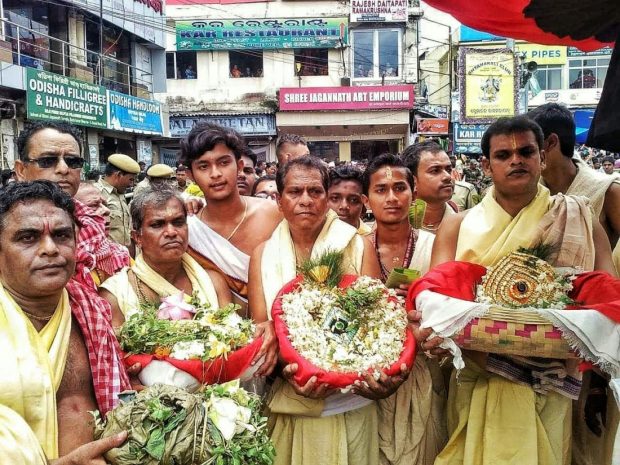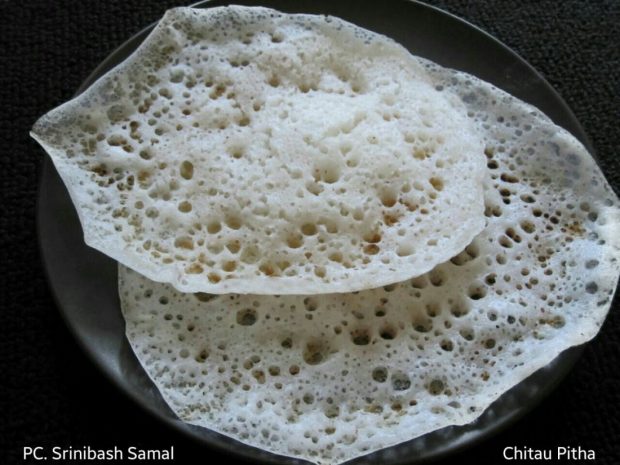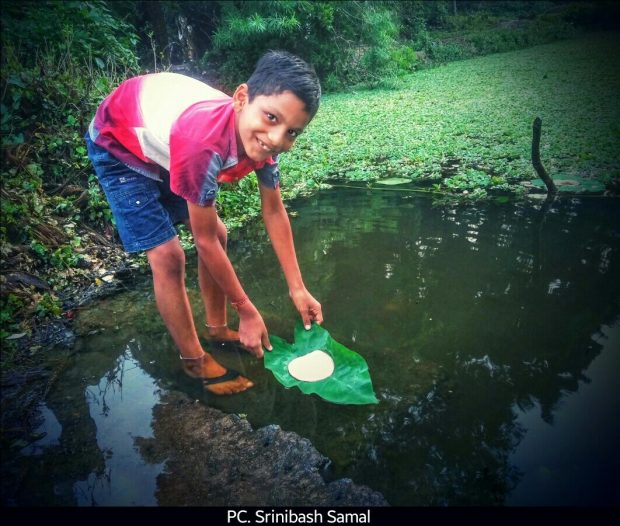Chitalagi Amavasya or Chitau Amavasya is celebrated every year in Shreemandir. It is a festival that dedicated to Lord Jagannath, the presiding deity of Odisha. It is one such festival which falls on the new-moon day of the Shravana masa (August). On this day, a special ritual is held at Shreemandir. The forehead of the chaturddha murtis is adorned with a golden mark known as Chita.
The word Chita in fact means decoration of forehead with special materials like chandana, musk and gorachana etc. But in this case, Three magnificent Chitas (ornaments of the foreheads) made of Gold, Diamond, Sapphire, Ruby and Emerald.
The Trinity always decorated with Their respective Chitas whole year. During Rath Yatra, the golden semblance or chita on the forehead of the deities are taken out on the day of Snana Purnima as They travel on the raths for nine days of visit to Gundicha temple And on this day the golden mark is again applied to the forehead of the Trinity.
The Trinity always decorated with Their respective Chitas whole year. During Rath Yatra, the golden semblance or chita on the forehead of the deities are taken out on the day of Snana Purnima as They travel on the raths for nine days of visit to Gundicha temple And on this day the golden mark is again applied to the forehead of the Trinity.
● This ritual is celebrated as “Chitraka Parba” ( Subarna Chita Lagi Anusthan – Rahu Rekha Lagi Anusthan ) in Jagannath temple. Connected with this is the decoration of Rahu Rekha. It is also an ornament of the head. This is removed from the head of the deities on the day of Snana Purnima and is again put on in the month of Sravana.
A special variety of rice-cake known as Chitou Pitha (like Pancake) is given to the deity as food-offering. This variety is also prepared in every household of the Odias of the coastal districts.
● Chitalagi or Chitou Amavasya is celebrated throughout the State in every Odia household.
In rural areas this is more or less observed as an agricultural festival. On this occasion the farmers worship the paddy-fields. After a purificatory bath in the morning they go to their respective paddy-fields with cake, flowers, milk etc and pray the fields to yield a good crop.
● By the Ancient Tradition, It is in the primitive tradition to appease evil powers through worship; whether they are animals, serpents, inspects or plants. People worship and pray them to avoid their wrath. ‘Pilas’ breed enormously in the paddy fields and tanks during the rainy season. Farmers while working bare-footed in the fields often get their feet cut by the sharp edge of their shells. Therefore, during the festival the pilas (one species of molluscs) are appeased as a female form of evil power known as ‘Gandeisuni’ (Genda mens Pila). The farmer girls go to the fields or water pools and while offering cakes pray “Oh, Gandeisuni, be appeased and do not cut the legs of my father or brother who will be working in this field.”
● In Sambalpur areas this festival is known as ‘Harali kans‘. People of the areas believe it to be a day of the witch, Tandei who moves in the dark to suck the blood of the children. To save children from her wrath mothers draw peculiar designs below the naval zone of the children before the night falls. As they believe that would scare away witch, a common variety of rice-cake ‘Chakuli Pitha’ is offered to the witch to be appeased and thereafter the cake is taken by all.
liked this article ? follow Srinibash Samal on twitter.



